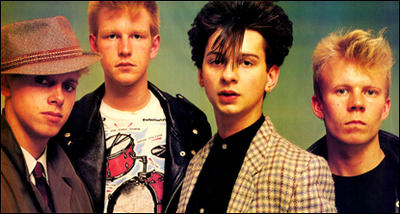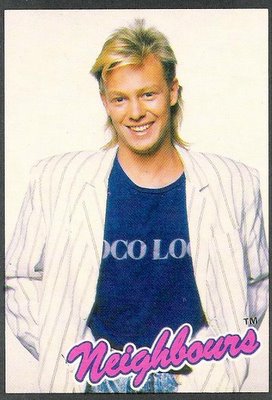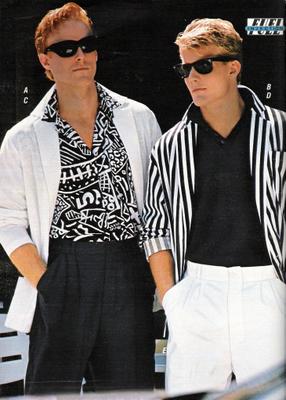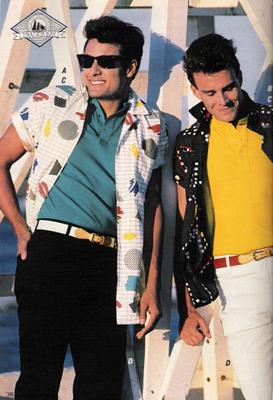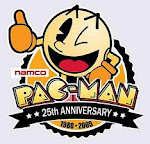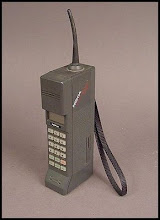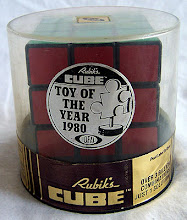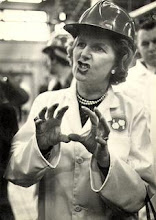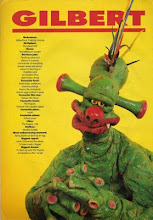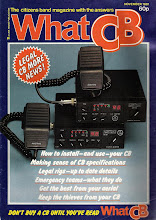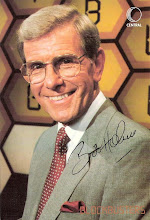The ancient cathedral in Ely, England. How is this related to the thoroughly Australian 'Neighbours'? Read on!
UPDATE: Delighted that Neighbours has been saved and will continue to delight its fans hopefully for decades to come! Especially delighted that Guy Pearce has agreed to make further appearances as Mike Young so that his romance with Jane Harris (Annie Jones) can continue.
We have very special memories of the show in the 1980s, and it's wonderful that Guy, a successful film actor, has such good feelings for the show. Guy was English-born and, in fact, came into the world just up the road from us in Ely, a small city which houses a gorgeous ancient cathedral, sometimes known as 'The Ship of the Fens.'
Good luck to Neighbours. We leave our original farewell article here as a tribute to the show - and a marker of a time when it seemed the show was about to end forever. But all roads lead back to Ramsay Street...
Original farewell article below, with lots of '80s memories...
My first favourite 'Neighbours' character ever, although I loved all the original Ramsay Streeters, was Julie Robinson. We already had lots of older sticky beaks in soaps, but Julie, played by Vikki Blanche, was around my age at the time, early twenties, and quite a novelty. Young sticky beaks did not abound in soap land and she was great fun. Of course, she believed that all her interfering was for the best. She, of course, KNEW exactly what was the best for everybody!I was very sorry to read about the axing of the long-running Australian soap Neighbours. I haven't watched in many years, but the show was such an incredible hit when it was first shown here in England in October 1986 that I, as a young twenty-something, was swept along and thoroughly enjoyed the tales from Ramsay Street for the first three or four years.
The Robinsons meet Paul's fiancée, Terry Inglis (Maxine Klibingaitis). Oh dear.
The show is stamped on my memories of the 1980s.
Here's a 'little' run through of my personal Neighbours legends...
(Takes deep breath):
I will never forget Elaine Smith as dependable, straight talking and lively Daphne Lawrence/Clarke - with her highly distinctive spiky hairdo; Vikki Blanche as the glorious young sticky beak Julie Robinson; Darius Perkins as troubled teen Scott Robinson; Paul Keane as hugely likeable, but never terribly lucky, bank manager Des Clarke; Francis Bell as the explosively tempered but also very lovable Max Ramsay; Dasha Blahova as Maria Ramsay - a kind and loving soul, but one indiscretion in 1969 caused huge complications; Myra de Groot as fabulously potty Eileen Clarke - I'll never forget the 'food poisoning' outbreak; Ian Smith as prissy but so-well-meaning Harold Bishop; the excellent child actress Kylie Flinker as Lucy Robinson; David Clencie as troubled Ramsay family member, but also outsider, Danny; Peter O'Brien - Danny's half-brother, Shane - cheerful, romantically unlucky and destined to become a gardener when his diving career was cut short; Vivean Gray as the legendary curtain twitcher Mrs Mangel, railing against 'that Ramsay woman!'; Anne Haddy as artist, grandmother and businesswoman Helen Daniels - kind, gracious, the perfect friend and confidante; Alan Dale as fatherly Jim Robinson - who was always there for his kids; Stefan Dennis as (at first) affable young Paul Robinson - to whom life was about to deliver a bitter blow; Anne Charleston as loud but loving Madge Ramsay/Bishop; Fiona Corke as Gail Lewis/Robinson - glamorous, business orientated and also highly sympathetic; Tom Oliver, who first appeared as rascally Lou Carpenter in 1988 - and immediately drove Harold to violence; Ally Fowler as madcap Zoe Davis - livewire pal of Daphne - who almost became Paul's step-mother; Regina Gaigalas as Andrea Townsend - a scheming minx who wasn't totally bad; Bradley Kilpatrick as Bradley Townsend - his ears were similar to Des Clarke's but Des was not his father - another excellent child actor; Annie Jones as gentle and kindly Jane Harris; Geoff Paine as Clive Gibbons - doctor and purveyor of chicken grams; Craig MacLachlan as the loopy and hilarious Henry Ramsay; Anne Scott Pendlebury as Julie's fellow Robinson sticky beak - the awesome Hilary; Lucinda Cowden as Melanie Pearson - madcap, dizzy and possessed of a highly distinctive laugh; and Guy Pearce as Mike Young - from a troubled family background, he found security in Ramsay Street.

And then, OF COURSE, there was Scott Robinson and Charlene Mitchell. Jason Donovan (the second actor to play Scott) and Kylie Minogue starred as the aspiring student journalist and the garage mechanic, who aided the show's popularity immeasurably with their stormy teenage romance and eventual fairy tale wedding.
We were glued to their dramas.
Mike, Scott and Charlene - Ramsay Street youth of the 1980s.
And, to end our Neighbours legends list, we could never leave out Bouncer, the lovable Labrador, who befriended Mrs Mangel. A brave and noble pooch indeed.
And, finally (phew!), not forgetting dear little Basil - Lucy's dog, and the original Neighbours canine.
When Lou Carpenter (Tom Oliver) first arrived at Lassiters in 1988, he wasted no time in calling Harold Bishop 'Jelly Belly'. Harold sprang up, ready to karate chop the swine into oblivion.Why did I like Neighbours? Well, I'd always been partial to a bit of soap, and this one was incredibly well done. Reg Watson was a master of his craft. It also had likeable characters and lashings of bright, zany '80s fashion and hair - and at the age I was, fashion was important.
But, also, the English soaps were getting a little depressing in the 1980s, as TV production luvvies set out to show us just how grim our lives were under Thatcher (I couldn't stick her, but the lefty luvvies' dog was far too darned shaggy!). It was good to see a show where people bickered and laughed and popped in for a natter and so on without the writers having some huge political axe to grind.
Happy days indeed! English actress Vivean Gray as the legendary Mrs Nell Mangel - on the prowl in Ramsay Street.
Reg Watson, Neighbours creator, stated that he got the idea for Neighbours watching Coronation Street in England, where he lived (and produced English Midlands soap Crossroads) for many years. But Neighbours was not Coronation Street. The fact that we viewed life in Ramsay Street from a child's eye level (with Lucy and Bradley) and the high teenage content, ensured that the show had its own style.
Mr Watson viewed communication between the generations as a very important ingredient.
He took his idea for an Australian street soap to Channel 7 in 1984, and then, once it was accepted, slaved over the details - until he felt he'd found just the formula.
Jane Harris - Annie Jones - wore whacking great shoulder pads at times, following the OTT 'power dressing' trend of the 1980s. Personally, I love '80s fashion!
Of course, Neighbours was further refined and honed when it went to Channel 10 in 1986.
And then it was perfection.
I still can't watch Daphne's death episode without blubbing. It was shown in 1988 in Aus and 1989 here in England. Full marks over and over again to Paul Keane as Des Clarke for his reaction.
Here in England, after its October 1986 debut, it swept up the TV ratings charts, and we loved it - and it has continued for thirty seven years.
Sincere sympathy to current followers of the show - losing a soap can be like losing a group of real life friends - and it still seems tremendously likeable from what we've seen (we at '80s Actual Towers haven't had an 'as broadcast' TV service for years because we don't want to pour money into the BBC's coffers).
Great acting from child performers like Kylie Flinker ensured that Ramsay Street would truly be a multi-generational soap.
Glad to hear Scott and Charlene will be making a return for the ending.
Mike, Shane, Harold and Des, too.
And, hey - who knows - perhaps the show itself will return one day? This hasn't been ruled out. It is naff of Channel 5 though. After the bizarre and intensely miserable events of the last two and a bit years, to pull the plug on something that helps some people through the day is not great behaviour.
Did it have to be now, Channel 5?
Back to the beginning, and it took Reg Watson some time to decide on the name for the serial. Should it be One Way Street? No Through Road? Or Living Together? Or...
When he first began work on scripts after Seven commissioned the show in 1984, it was Living Together, although this was provisional. Jan Russ, casting director, who was then working on the final years of Prisoner Cell Block H (which ran from 1979 to 1986), recalled: 'I received this phone call from Reg Watson, who said to me, "We're thinking about doing a new show. I'll send you a couple of scripts down." The scripts were originally called Living Together. I read the scripts and started putting a cast together.'
Ian Smith is bringing Harold Bishop back for the ending. Dear old fusspot Harold is apparently involved in a central storyline about grieving. Harold has had a very sad life in some ways - including lodging with Mrs Mangel for a time in the 1980s.
Neighbours history is fascinating to recount. But how will it end? Will Scott and Charlene decide to buy a house in Ramsay Street and force Paul to mend his ways? Will Mike Young rekindle his romance with Jane Harris? Will Clive take up Chicken Grams again in protest? Will Melanie win a million on the lottery and buy Lassiters?
Or perhaps it could end in 1985 with a young man, suddenly sitting bolt upright in bed, his face covered with sweat. He looks wildly around him, but all is quiet.
'Thank heavens, it was only a dream,' says Danny Ramsay, and goes back to sleep...
No, sorry, I forgot - they already did the dream thing in Dallas...
There are rumours circulating that Reg Watson originally 'pitched' (a pitch is a rudimentary outline of a series scenario and characters) the Street soap idea to Australian Channel 9 in 1982. If this is true, and had it come to pass, then we wouldn't have ended up with Neighbours as we know it. Time, experience and the perfect blend of events (things like the BBC looking round for a new soap for its new afternoon schedule in 1986), writers and cast needed to fall into place for that. Reg Watson himself never spoke of any Street soap pitch to Channel 9, but he did say:
'In pitching the show to Seven and Ten, I blithely said, "This concept can run for twenty years." I knew from the looks on their faces that they thought they'd heard it all before.'
It did much better than he thought, didn't it?
'Suddenly every part of me needs to know every part of you...'
Mrs Mangel: 'Really - such vulgar lyrics!'
Madge: 'Oh shut up, you old biddy!'
 An original early 1980s Rubik's Cube. The British Association of Toy Retailers noted the intense interest in the Cube upon its arrival in late 1980 and named it Toy Of The Year as a huge Cube shortage began. There simply were not enough to go round! In the spring of 1981, the nation was finally fully stocked and the Cube won Toy Of The Year for the second year running.
An original early 1980s Rubik's Cube. The British Association of Toy Retailers noted the intense interest in the Cube upon its arrival in late 1980 and named it Toy Of The Year as a huge Cube shortage began. There simply were not enough to go round! In the spring of 1981, the nation was finally fully stocked and the Cube won Toy Of The Year for the second year running. I can't.
I can't.  "A Simple Approach To The Magic Cube" by Bridget Last, published in 1980 by a small publishing company, Tarquin Publications of Diss, Norfolk - the first Cube book published in England. The print run was so limited (for what was then a tiny niche puzzle following) that finding a copy today is like finding gold dust. Middle pictures - old Hungarian Magic Cubes occasionally turn up on eBay. There are fascinating differences in the look, weight and feel of the Magic Cube when compared to the Rubik's Cube. Far right - a magazine ad for the Hungarian Magic Cube from March 1981, dating to the time of the worldwide shortage of the new Rubik's Cubes. The book and the Pentangle (a small UK-based company) sold Hungarian Magic Cube are mine. I daren't handle the Cube in case it falls apart! Pentangle, a small company who distributed small numbers of Magic Cubes in the UK, seeing major potential in the puzzle and themselves as continuing distributors, were hoping that the Cube would be mass manufactured (difficult to achieve at that time in Communist Hungary), but the rights were given to Ideal Toys and it was renamed and remanufactured before that happened - and it had any widescale impact on the UK and the rest of the Western World.
"A Simple Approach To The Magic Cube" by Bridget Last, published in 1980 by a small publishing company, Tarquin Publications of Diss, Norfolk - the first Cube book published in England. The print run was so limited (for what was then a tiny niche puzzle following) that finding a copy today is like finding gold dust. Middle pictures - old Hungarian Magic Cubes occasionally turn up on eBay. There are fascinating differences in the look, weight and feel of the Magic Cube when compared to the Rubik's Cube. Far right - a magazine ad for the Hungarian Magic Cube from March 1981, dating to the time of the worldwide shortage of the new Rubik's Cubes. The book and the Pentangle (a small UK-based company) sold Hungarian Magic Cube are mine. I daren't handle the Cube in case it falls apart! Pentangle, a small company who distributed small numbers of Magic Cubes in the UK, seeing major potential in the puzzle and themselves as continuing distributors, were hoping that the Cube would be mass manufactured (difficult to achieve at that time in Communist Hungary), but the rights were given to Ideal Toys and it was renamed and remanufactured before that happened - and it had any widescale impact on the UK and the rest of the Western World. Mathematician David Singmaster wrote:
Mathematician David Singmaster wrote: Like most of us, 13-year-old Patrick Bossert had trouble obtaining a Rubik's Cube when they were first released in England in late 1980. There was an acute shortage. He finally secured one in March 1981 and had soon gained a bit of a reputation as a Cube Master at his school. You Can Do The Cube followed - it was published in June 1981 and became the year's bestseller. By the end of the year, it had been reprinted (at least) fourteen times, and Patrick went on to make a cube-solving video.
Like most of us, 13-year-old Patrick Bossert had trouble obtaining a Rubik's Cube when they were first released in England in late 1980. There was an acute shortage. He finally secured one in March 1981 and had soon gained a bit of a reputation as a Cube Master at his school. You Can Do The Cube followed - it was published in June 1981 and became the year's bestseller. By the end of the year, it had been reprinted (at least) fourteen times, and Patrick went on to make a cube-solving video.  From the Cambridge Evening News, England, 15 July 1981. The Rubik's Cube craze had swept through Cambridge schools earlier in the year, and now it was time for a competition.
From the Cambridge Evening News, England, 15 July 1981. The Rubik's Cube craze had swept through Cambridge schools earlier in the year, and now it was time for a competition. From the Daily Mirror, 12/8/1981. The article reminds me that "Rubik's Cube" was just as commonly known as "the Rubik Cube" back then. The official name, chosen by Ideal Toys back in 1980, was the former.
From the Daily Mirror, 12/8/1981. The article reminds me that "Rubik's Cube" was just as commonly known as "the Rubik Cube" back then. The official name, chosen by Ideal Toys back in 1980, was the former. ... featuring a leggy, lip-glossed female Cubist...
... featuring a leggy, lip-glossed female Cubist... ... an in-depth explanation of what makes a Rubik Cube twist...
... an in-depth explanation of what makes a Rubik Cube twist... ... and two little boys - the dark haired one looks rather as though he's wearing hairspray to me.
... and two little boys - the dark haired one looks rather as though he's wearing hairspray to me. Joan Smith's Great Cube Race was a 1982 children's story about a school's Rubik's Cube contest...
Joan Smith's Great Cube Race was a 1982 children's story about a school's Rubik's Cube contest...  People were doing the Cube absolutely everywhere - as this newspaper article from the "Sun", May 13, 1982, shows!
People were doing the Cube absolutely everywhere - as this newspaper article from the "Sun", May 13, 1982, shows! 







